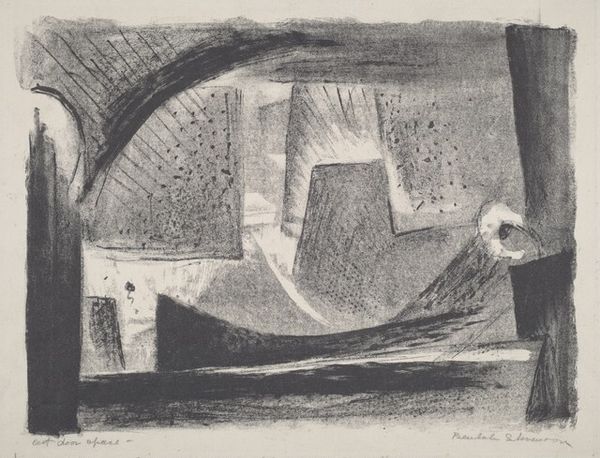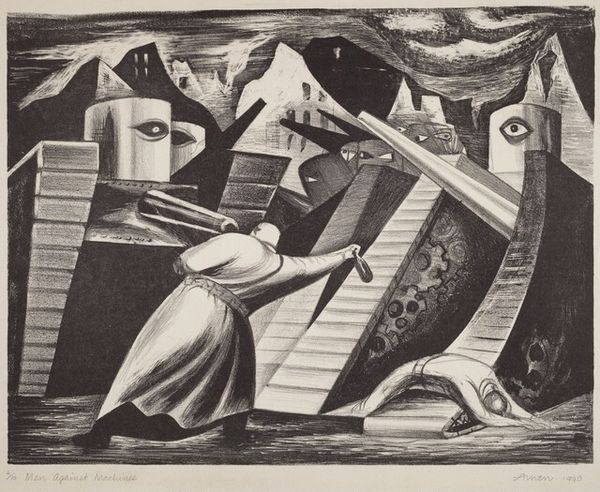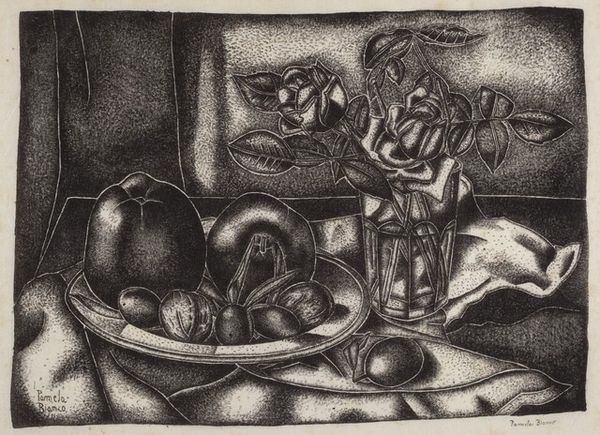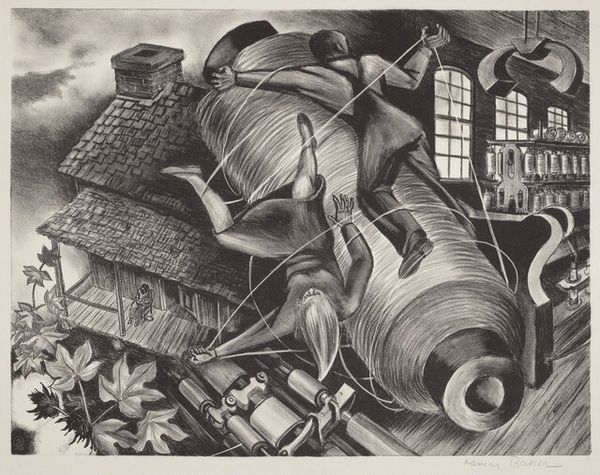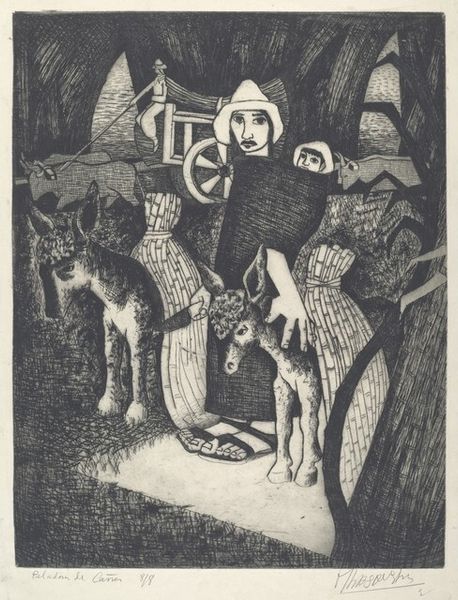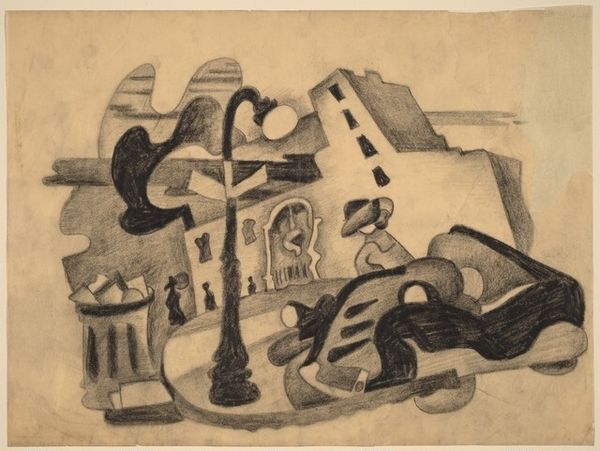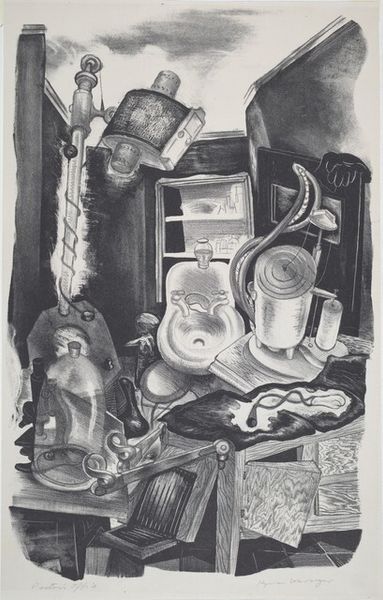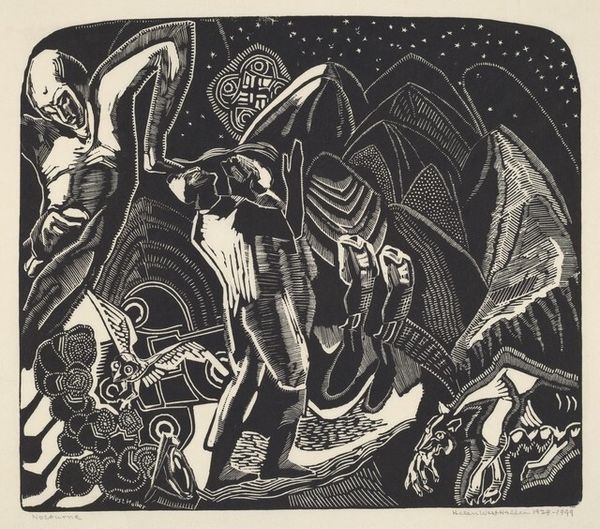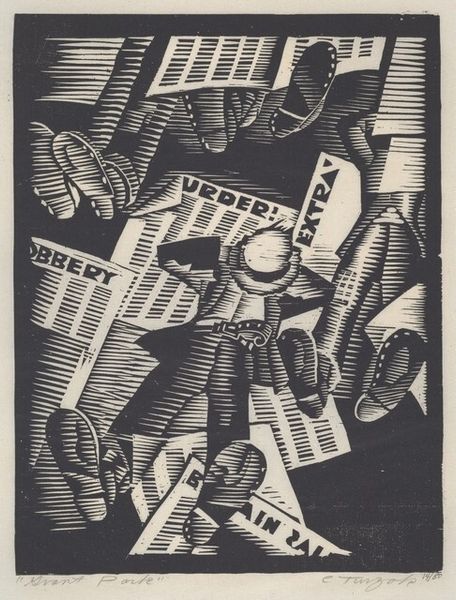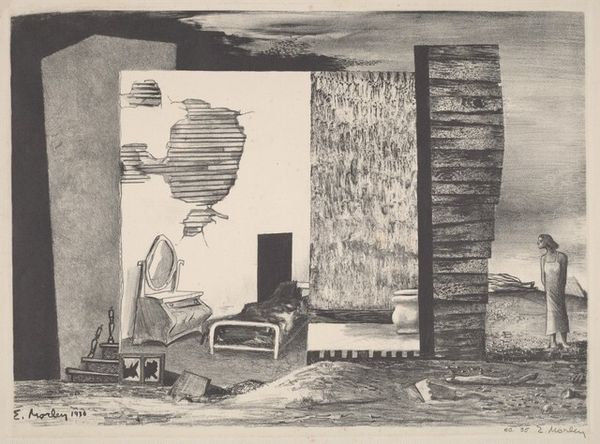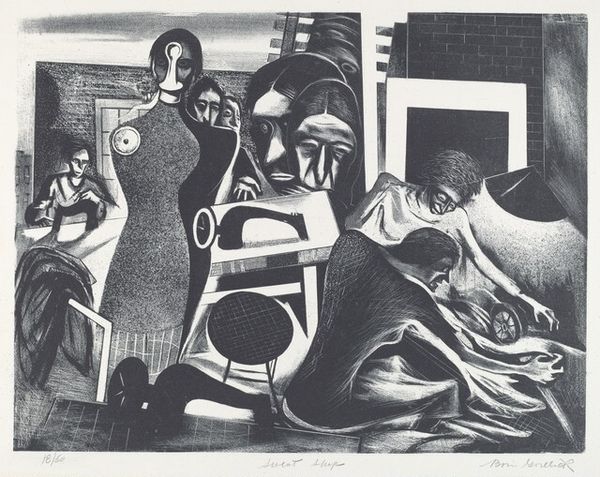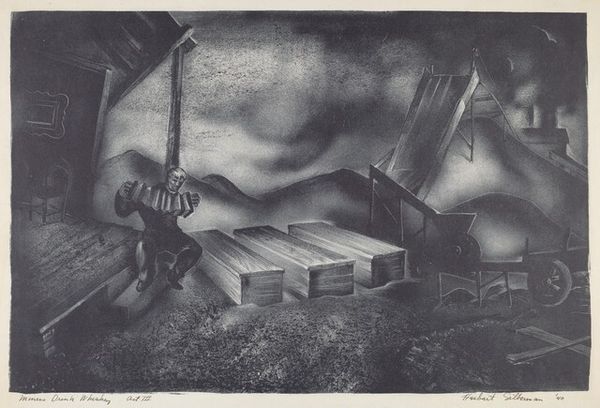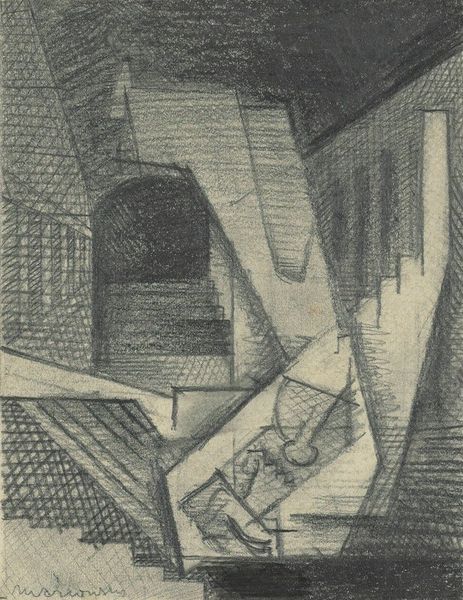
drawing, print, pencil
#
drawing
# print
#
pencil sketch
#
pencil drawing
#
pencil
#
genre-painting
#
realism
Dimensions: image: 29.5 x 34.9 cm (11 5/8 x 13 3/4 in.) sheet: 37.9 x 46.5 cm (14 15/16 x 18 5/16 in.)
Copyright: National Gallery of Art: CC0 1.0
Curator: This is "The Forge," a pencil drawing and print created by Wanda Gág in 1932. Editor: It's got this really dense, almost claustrophobic feeling to it. All those tools crammed together...makes me think of cluttered workshops from my childhood. Dusty, metallic, a bit… menacing, almost. Curator: Indeed. The image speaks to broader debates regarding industrial labor, specifically the romanticized portrayal of the pre-industrial trades juxtaposed against the growing mechanization during the early 20th century. Gág's focus on a space filled with hand tools asks us to reflect on the changing nature of work. Editor: Absolutely, you can practically smell the wood shavings and the sweat! But there’s something about how she’s arranged everything; the light from the window… it’s more than just a snapshot. It almost feels staged, like a little theater set of a dying craft. Curator: That staging invites a powerful critique of capitalism, doesn’t it? Highlighting the value, yet simultaneously signaling the marginalization, of manual skills. Her work often delved into similar social critiques through explorations of personal space. Editor: Exactly! And the pencil work... that tight hatching gives everything this tangible weight, but it's also dreamlike. It reminds me that we see nostalgia itself through a crafted lens. I like how the drawing material reinforces the subject of hand-made quality. Curator: Yes. Gág, a woman artist portraying labor, introduces an interesting layer considering the gendered expectations tied to domestic space and professional spheres during the period. How does a woman’s gaze reframe the narrative? Editor: Good point! Maybe that’s part of why it feels a bit off-kilter. It's like she’s turning the traditionally masculine world of the forge into a still life, making it quieter, more contemplative. Makes me question the whole "strong man" narrative linked with this craft. Curator: Examining those kinds of assumptions, those gendered power dynamics that structure labor and art itself, becomes very important in viewing "The Forge." Thank you, as always, for these thoughtful personal connections, lending contemporary meaning. Editor: Of course! It’s one thing to study art, but another to really feel its textures against our own lives. Always good to connect the personal and the historical and let the drawing lead you somewhere new!
Comments
No comments
Be the first to comment and join the conversation on the ultimate creative platform.
